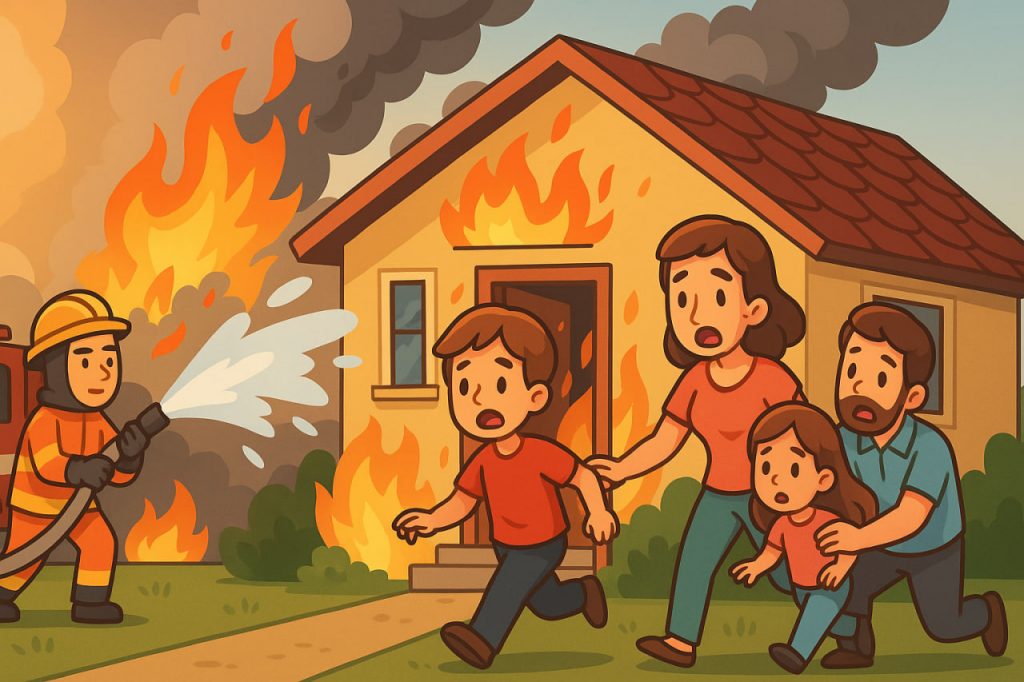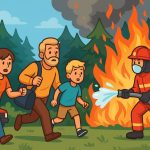A house fire is one of the most dangerous emergencies a person can face. Fires spread quickly, produce toxic smoke, and can cause severe injuries or death within minutes. Knowing the right steps to take in advance can save lives.
1. Stay Calm and Act Quickly
The first and most important rule is to remain as calm as possible. Panic wastes precious seconds. Fires can double in size every 30–60 seconds, so acting immediately is critical.
2. Alert Others and Call for Help
- Shout to alert everyone in the house.
- If possible, activate the fire alarm if it has not already sounded.
- Call emergency services (fire department) as soon as you are safe.
3. Escape, Don’t Fight the Fire
- Do not waste time collecting valuables.
- Leave the building immediately through the nearest safe exit.
- If smoke is present, stay low to the ground to avoid inhaling toxic fumes.
- If your clothes catch fire, remember: Stop, Drop, and Roll.
4. Use Doors Safely
- Before opening a door, touch it with the back of your hand. If it is hot, do not open it.
- If trapped, close all doors between you and the fire, and signal for help from a window.
5. Avoid Smoke Inhalation
Most deaths in fires are caused by smoke, not flames. Cover your nose and mouth with a cloth (preferably damp) while escaping.
6. Once Outside, Stay Outside
- Never re-enter a burning building.
- Meet at a prearranged safe spot outside where everyone in the household gathers.
- Inform firefighters if someone is missing.
7. Prevention Is Key
- Install and regularly test smoke detectors.
- Keep fire extinguishers in accessible areas (kitchen, garage).
- Practice fire drills with your family.
- Avoid overloading electrical outlets and keep flammable items away from heat sources.
Conclusion
A house fire can turn deadly in minutes, but preparation and quick action save lives. Prioritize safety, focus on escape rather than fighting flames, and never underestimate the danger of smoke. Being informed and practicing fire safety measures is the best defense.
Glossary
- Smoke inhalation – Breathing in toxic gases produced by fire.
- Fire alarm – A device that detects smoke or heat and alerts occupants.
- Stop, Drop, and Roll – Technique to extinguish flames on clothing.
- Fire drill – A practice run of emergency evacuation.
- Extinguisher – A portable device used to put out small fires.


